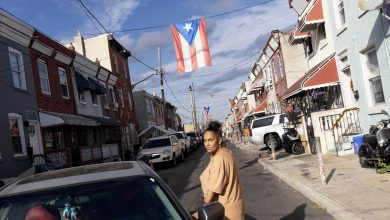Pajaro, California: The Announced Flooding of a Latino City
The levees were built in 1949 and, as documented in a report by the Army Corps of Engineers, the walls no longer "provide an adequate level of protection"
California is a state with frequent earthquakes, fires, floods, avalanches, droughts and, in recent years, even a pandemic.
Although the authorities have resources and programs to assist those affected in emergencies, marginal communities in rural areas are generally the last to receive assistance. Including communities with undocumented immigrants who sometimes do not speak English, are not familiar with the different programs, and do not have the experience of navigating the complex bureaucratic requirements.
That was evident days ago in the city of Pajaro, in Monterey County, where after the waters overflowed the levees of the river of the same name, the city was flooded.
A Latino City
Pajaro is located across from Monterey Bay, in an agricultural region inhabited by nearly 3,000 people, 94% of whom are Latino. Many humble men and women who, for the most part, work in fields where strawberries, apples, cauliflower and flowers are grown. It can be speculated that a considerable number are undocumented immigrants.
Perhaps the only relevant historical event that put Pajaro on the map is that on May 11, 1903, a train arrived with then-President Theodore Roosevelt who made a brief stop at the station and, after a ten-minute speech, he left for Santa Cruz.
But what also makes Pajaro appear in the news is the flooding of the river that sporadically threatens the city, as it happened in 1995, 1997, 1998, and now in 2023. A succession of events that clearly suggests that the problem is not new.
And it’s not new because the Pajaro River levee was built in 1949 and, as documented in a report by the Army Corps of Engineers, the walls no longer “provide an adequate level of protection.”
In 1995, the flood caused two deaths and losses of almost $100 million. Then the city flooded again in 1997 and 1998. And as if there were no doubt about the pattern that emerged, in January of this year the residents of El Pajaro were evacuated because it seemed that the river would again overflow its banks.
Discriminatory Treatment
California has many examples of natural disasters. But none of the floods compare to the one that occurred on May 12, 1928 when the San Francisco Dam collapsed causing the flooding of Ventura and Los Angeles counties.
It is estimated that around 500 people lost their lives. Most were farm workers.
Some analysts have concluded that, as in this case, the investment in preventive infrastructure in communities with low-income workers (which in rural California typically includes large numbers of undocumented immigrants) is inadequate compared to those in more affluent regions.
In the case of the San Francisco Dam, according to reports at the time, even the rescue of the victims was limited and, on occasions, deficient. For example, the Red Cross refused to intervene and the task was left in the hands of local community organizations. Even the City of Los Angeles, which was responsible for the operation of the dam, offered much lower compensation to Latino workers.
An Auditor Report
A 2019 state auditor report of Butte, Sonoma and Ventura counties confirms that California authorities have not paid enough attention and even ignored marginalized communities left vulnerable to fires, floods and other natural disasters.
“During a natural disaster, some people have needs, known as access and functional needs, that cannot be met by traditional emergency response and recovery methods,” states the report. “These functional and access needs come from a variety of circumstances, such as disabilities, limited English proficiency, transportation disadvantages, and advanced age. While everyone is vulnerable during a natural disaster, people with access and functional needs are even more vulnerable. This report concludes that despite guidance from the Federal Emergency Management Agency (FEMA) and the California Governor’s Office of Emergency Services (Cal OES), these three counties have not adequately implemented best practices to protect to vulnerable populations, which may put its residents at increased risk of harm during future natural disasters.”
In the case of Pajaro, the flood was not so much a natural disaster as carelessness and human negligence. It would seem that it was the authorities who, confirming the conclusions of the 2019 state auditor’s report, did not take the necessary preventive measures to avoid the overflow.
According to an opinion article published in the Los Angeles Times by professors Michael Méndez, from the University of California at Irvine (UCI), and Manuel Pastor, from the University of Southern California (USC), the authorities seemed to be aware of the shortcomings of the levees but did not do anything because a cost analysis would have led them to conclude that the impact on such a low-income community would not justify the investment.
Newson Visits Pajaro
California Gov. Gavin Newsom visited Pajaro on March 14 to survey the extent of the damage, saying that while funds are available to repair the levees, according to existing plans it would take 5 to 7 years.
“Based on this experience, nobody has the patience to wait 5 or 7 years,” Newsom said. “Now our job is to coordinate with the Army Corps of Engineers to reanalyze the project and review the timing. I assure you that those talks are already underway.”
The losses for the agricultural sector are considerable; the losses for farm workers, even greater. The governor announced that with funds from the Department of Agriculture and United Way there will be $600 assistance for affected workers who, it should be remembered, many are undocumented.
This article was supported in whole or in part by funds provided by the State of California, administered by the California State Library and the Latino Media Collaborative.











